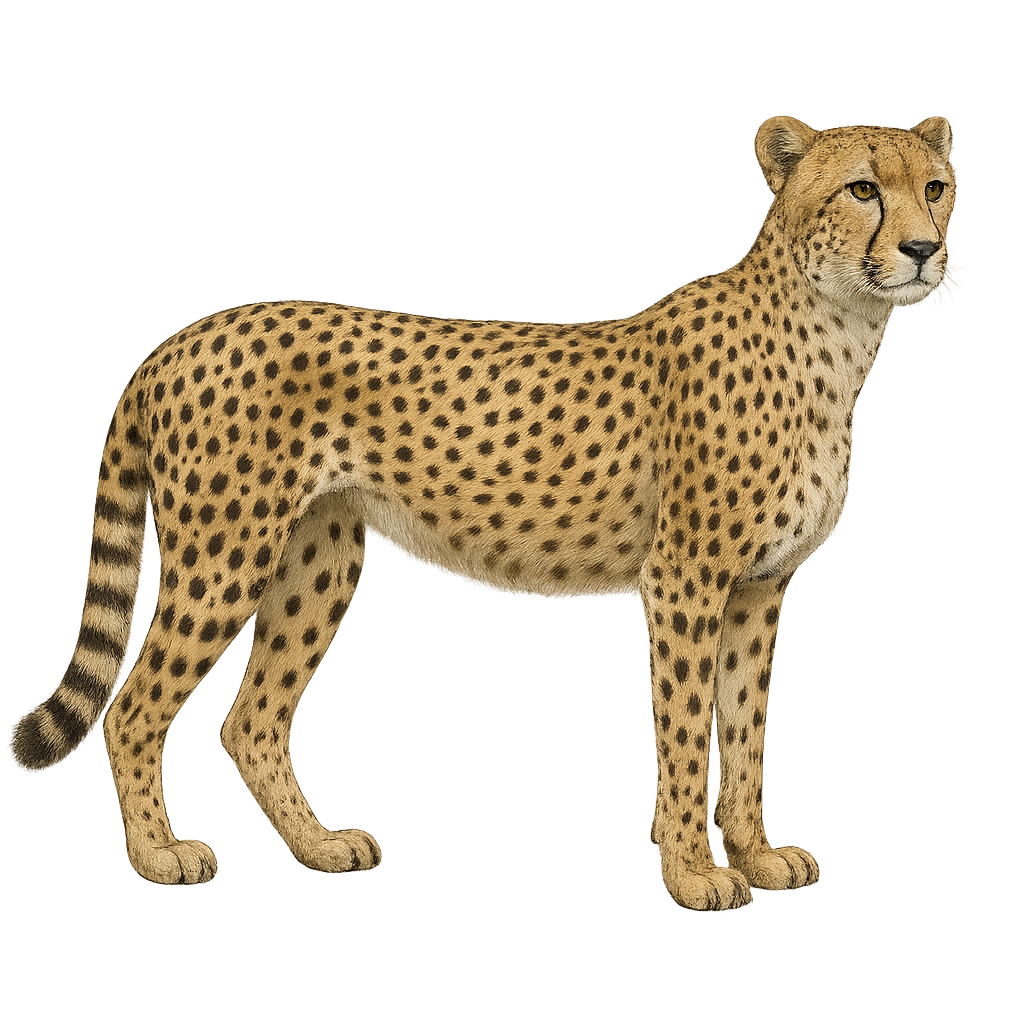Your wildlife photography guide.
Explore the saharan cheetah in detail, study its behavior, prepare your shots.
Where to observe and photograph the saharan cheetah in the wild
Learn where and when to spot the saharan cheetah in the wild, how to identify the species based on distinctive features, and what natural environments it inhabits. The WildlifePhotographer app offers tailored photography tips that reflect the saharan cheetah’s behavior, helping you capture better wildlife images. Explore the full species profile for key information including description, habitat, active periods, and approach techniques.
Saharan cheetah
Scientific name: Acinonyx jubatus hecki

IUCN Status: Critically Endangered
Family: FELIDAE
Group: Mammals
Sensitivity to human approach: Shy
Minimum approach distance: 50 m
Rut period: November to January
Gestation: 90-98 jours
Births: February to May
Habitat:
Deserts, savannas, steppes
Activity period :
Primarily active during the day, with peak activity in the morning and late afternoon.
Identification and description:
The Saharan cheetah, or Acinonyx jubatus hecki, is a rare subspecies of cheetah found mainly in the desert regions of the Sahara. It is distinguished by its pale coat and less pronounced spots, making it well-suited to its arid environment. This feline is an agile and fast predator, capable of reaching impressive speeds to catch its prey. Unfortunately, it is critically endangered due to habitat loss, hunting, and the decline of its natural prey. Conservation efforts are crucial for its survival. Solitary by nature, the Saharan cheetah is primarily active during the cooler hours of the morning and evening, avoiding the intense desert heat.
Recommended lens:
400 mm – adjust based on distance, desired framing (portrait or habitat), and approach conditions.
Photography tips:
To photograph the Saharan cheetah, it is essential to maintain a safe distance of at least 50 m to avoid disturbing it. Use a telephoto lens of 400 mm or more to capture detailed images without getting too close. The best photo opportunities occur early in the morning or late in the afternoon when the cheetah is active. Be patient and discreet, using a tripod to stabilize your camera and achieve sharp shots.
The WildlifePhotographer App is coming soon!
Be the first to explore the best nature spots, track rutting seasons, log your observations, and observe more wildlife.
Already 1 430 wildlife lovers subscribed worldwide

